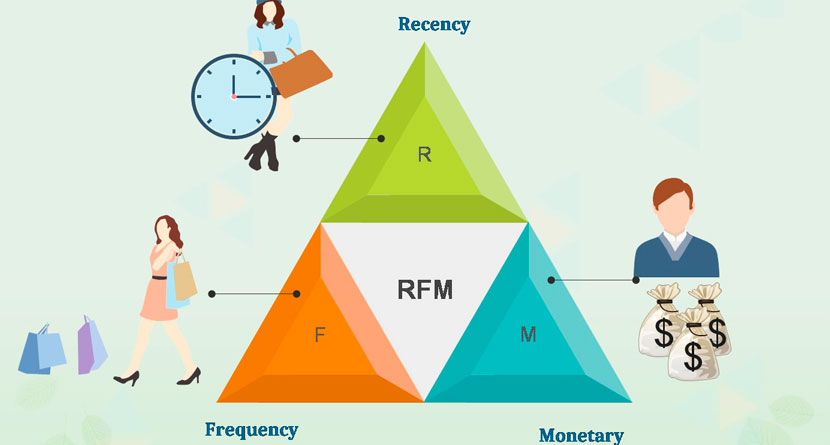Thankfully, the golf facility industry, in recent years, has begun to make great strides in deploying database marketing best practices to manage inventory, deploy effective yield management strategies, quantify golfer behaviors and leverage these and attitudinal data points to create more effective marketing communications. Because our firm’s work extends beyond golf to encompass other sports, travel and the leisure industry, we’ve enjoyed a front-row seat as both observers and participants in helping to identify, track and measure behaviors and attitudes of best customers and harness these insights into actionable marketing strategies.
We all know variations of the 80/20 rule—that a disproportionate percentage of a property’s business comes from a much smaller percentage of that organization’s customer base. Our research has shown the same to be true in the golf business, with roughly 30% of those defined as “golfers” contributing upwards of 70% of the rounds played and related spending. It’s incumbent to track the behavior of these high revenue segments. An effective tee sheet management system that captures all players in the group, is an important first step. There are three key measures that the hospitality industry typically looks at and later aggregates and scores to identify best customers using a technique known as RFM analysis. The three components to RFM are:
Recency: Simply put, how recently has a golf facility transacted with a particular customer? The more recent the transaction, the easier it is to reach that customer and assuming the customer experience was a positive one, retain and cultivate them as loyal customers. In building towards RFM analysis, each player should be scored based on where they fall (what percentile) relative to all customers in terms of recency.
Frequency: The obvious metric of how often someone plays at one’s facility. RFM models also score each customer based on the relative frequency of their engagement with a property, relative to others. It’s intuitive that the more frequently one plays at a golf facility, the more valuable they may be as a best customer. An interesting adjunct to frequency that ideally should be tracked through carefully designed survey research, is share of customer. Ie…It’s one thing to know that Mr. Smith, by virtue of logging 30 rounds at facility X over the past season, is one of facility X’s most frequent players, but there’s more learning to put this in context. If Mr. Smith is also logging 50 rounds at facility Y down the street, one would view him differently and take on a very different marketing communications strategy to retain and optimize his business than if he wasn’t playing anywhere else.
Monetary: The “M” of RFM relates to actual revenue (or in some cases profit) derived from an individual customer. With time adjusted variable pricing and the use of tee time aggregators becoming more commonplace among golf facilities, the relationship between frequency of customer interactions and the financial benefit that each provides are not always linear. So, in building an RFM model, one wants to look at the actual revenue yield achieved among those in the customer database. Again, points are assigned based on the relative performance of a customer against this metric, relative to others.
The aggregation and modeling stages of RFM often vary dependent upon the goals and other facility fundamentals. What this step has in common across properties, is that each of the above components are analyzed for each customer and scored relative to the comparable behaviors of the full customer base. The model often then plots each customer and prioritizes them into various segments that factor where they stand in aggregate across the three RFM metrics. As a start, you’ve now identified and prioritized your best customers, and this can be a trigger towards allocating relative loyalty marketing efforts (Something I’ll speak to in a future column) and promotional currency.
But the most effective loyalty marketing and customer retention strategies don’t stop with the identification of behavioral segments. The next step, concurrent with RFM modeling, integrates attitudinal marketing research that adds greater granularity, context and holistic information on the golfer as customer to the behavioral profile derived through RFM. We’ve seen such a tact best deployed by many of our clients in the resort, cruiseline and casino industries, where well designed surveys capture this attitudinal data and where customer permission is granted (typically through formal loyalty programs) append this information to each customer record so as to enable marketing communications to better speak to these customers individually and holistically; and in many cases, create a more compelling offer to achieve additional business. In a simple, but real life example, working with one of our casino clients, the property first went through a variation of the RFM modeling and segmentation effort described above, to create various loyalty tiers of customers. Members of the most attractive tiers were then opted in as part of a best customer research panel that further solidified the relationship with these customers by actively soliciting their input into property decisions. Of course, from a marketing perspective it also allowed management to learn more about where the property fit into other leisure behaviors and preferences. In this particular case, we learned other leisure affinities such as musical and pro sports preferences, which were leveraged into customized loyalty rewards and offers.




